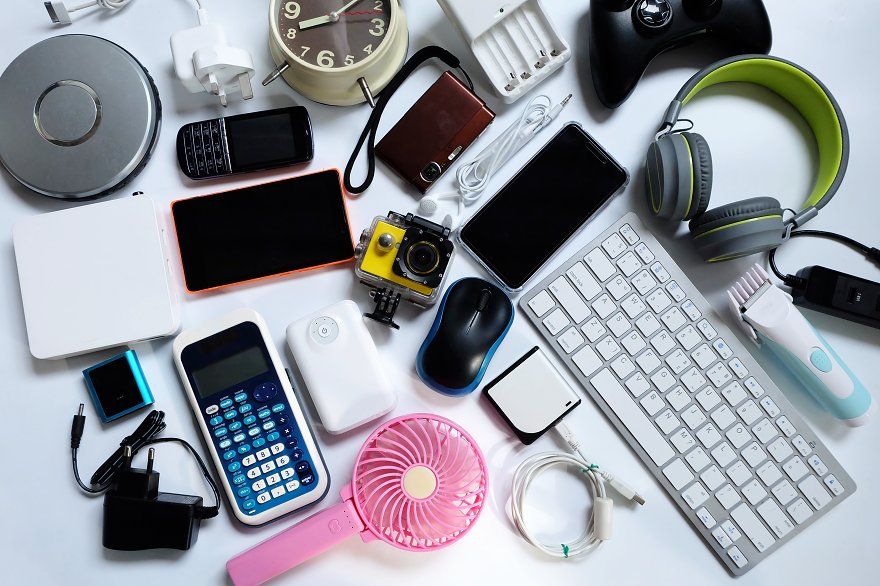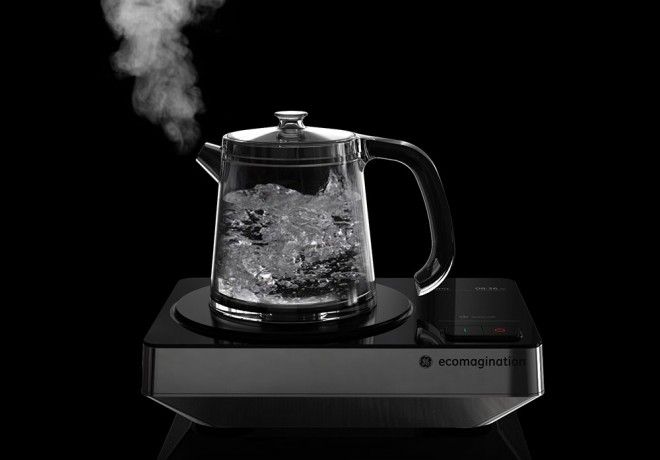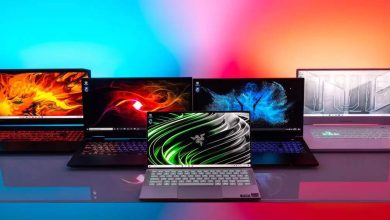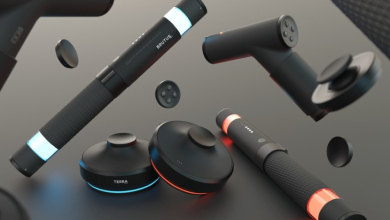Modern Gadgets Simplify Complex Daily Tasks
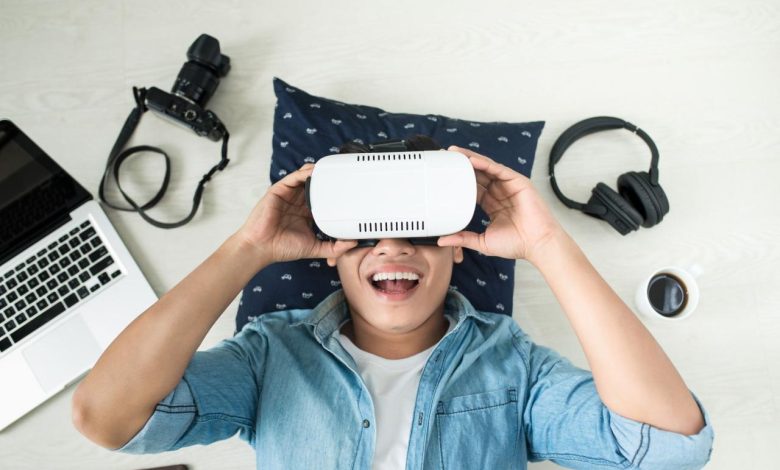
In our fast-paced digital era, modern gadgets have become the cornerstone of simplifying intricate daily routines. These devices, ranging from smart home assistants to wearable technology, have transformed the way we work, communicate, and manage our personal lives. By automating mundane tasks, enhancing productivity, and streamlining everyday operations, modern gadgets offer unparalleled convenience and efficiency. This comprehensive article delves into how these innovations are reshaping daily life, examines various gadget categories, highlights their benefits and potential challenges, and explores future trends that promise even greater integration of technology into our routines.
The Evolution of Modern Gadgets
The transformation from bulky, limited-function devices to sleek, multifunctional gadgets has been nothing short of revolutionary. The evolution of technology over the past few decades has enabled the development of compact devices that perform complex functions, once thought impossible.
A. Historical Context
Historically, daily tasks required significant manual effort and time. For instance, before the advent of modern appliances, tasks such as cooking, cleaning, and even simple communication were labor-intensive. The introduction of early electrical appliances paved the way for today’s smart devices, which incorporate advanced software, artificial intelligence (AI), and connectivity to transform everyday tasks.
B. Milestones in Technological Advancement
Modern gadgets are the culmination of various technological milestones:
A. Microprocessor Revolution: The invention of microprocessors enabled the miniaturization of electronic components, making it possible to embed intelligence into small devices.
B. Internet of Things (IoT): The integration of IoT has connected devices in ways that allow them to communicate and work collaboratively, making automated systems a reality.
C. Wireless Communication: The development of wireless networks has allowed gadgets to be interconnected without the need for cables, facilitating mobility and remote control.
D. Artificial Intelligence: AI has empowered gadgets with the ability to learn from user behavior and optimize performance, leading to smarter, more intuitive devices.
E. User Interface Innovations: The shift from physical buttons to touchscreens and voice-activated controls has enhanced user interaction, making technology accessible to a broader audience.
Impact on Daily Tasks
Modern gadgets have reshaped the landscape of everyday life, offering solutions that simplify complex tasks and provide time-saving benefits. Their impact can be observed across various aspects of daily routines:
A. Communication and Connectivity
Communication has been revolutionized by smartphones, tablets, and other connected devices. These tools facilitate seamless interaction, whether for personal use or professional collaboration. They offer instant messaging, video conferencing, and social media integration, ensuring that people remain connected regardless of distance.
B. Task Automation and Productivity
Automating repetitive tasks is one of the most significant contributions of modern gadgets. Devices like smart speakers and virtual assistants can schedule appointments, set reminders, and even control other gadgets within the home. This automation allows users to focus on more strategic and creative endeavors.
C. Home Management
Smart home technologies have streamlined household management. From automated lighting and climate control to smart security systems, these gadgets enhance comfort, safety, and energy efficiency. Homeowners can manage these systems remotely, ensuring that their living spaces remain secure and optimized even when they are away.
D. Health and Well-being
Wearable technology, such as fitness trackers and smartwatches, monitors health metrics and provides insights into physical activity, sleep patterns, and overall wellness. These gadgets encourage a proactive approach to health by tracking progress and motivating users to maintain healthy lifestyles.
E. Entertainment and Leisure
Modern gadgets have also enriched entertainment experiences. High-definition televisions, gaming consoles, and virtual reality headsets offer immersive experiences that transform leisure time. These devices not only entertain but also provide educational content and interactive experiences that foster learning and creativity.
Categories of Modern Gadgets
The diversity of modern gadgets means that there is something for every aspect of daily life. Below are some key categories and how they contribute to simplifying complex tasks:
A. Communication Devices
Communication gadgets have become indispensable tools for both personal and professional use. These devices facilitate instant connectivity, information sharing, and collaboration.
- Smartphones and Tablets: Provide voice, text, and video communication along with internet access.
- Laptops and Ultrabooks: Offer portability combined with the power to run complex applications.
- Smartwatches: Enable quick notifications and health monitoring without needing to pull out a phone.
- Wearable Headsets: Enhance virtual meetings and gaming experiences with superior audio and connectivity.
B. Home Automation Systems
Home automation has transformed household management by integrating various devices into a cohesive system that can be controlled remotely.
- Smart Thermostats: Automatically adjust heating and cooling for energy efficiency.
- Security Cameras: Offer real-time surveillance and alerts for home security.
- Smart Lighting: Allows remote and automated control of indoor and outdoor lighting.
- Voice-Activated Assistants: Control multiple home functions through voice commands.
C. Health and Fitness Gadgets
These devices help monitor physical well-being and promote healthy lifestyles by tracking vital metrics and activity levels.
- Fitness Trackers: Monitor steps, heart rate, and physical activity.
- Smart Scales: Provide insights into weight, body fat, and overall health metrics.
- Sleep Monitors: Analyze sleep patterns to improve sleep quality.
- Smart Watches: Combine fitness tracking with communication and productivity functions.
D. Productivity and Work Tools
For professionals, productivity tools are essential to managing daily tasks and optimizing work processes.
- Project Management Software: Helps teams collaborate, assign tasks, and track progress.
- Cloud Storage Solutions: Enable secure file sharing and remote access to documents.
- Digital Planners: Integrate scheduling, task lists, and reminders into one platform.
- Collaboration Apps: Facilitate seamless communication and information sharing across teams.
E. Entertainment and Multimedia Gadgets
Modern entertainment devices have redefined leisure, offering interactive and immersive experiences that go beyond traditional media consumption.
- Smart TVs: Integrate streaming services, apps, and interactive features.
- Gaming Consoles: Provide high-definition graphics and multiplayer capabilities.
- Virtual Reality (VR) Headsets: Create immersive experiences for gaming and educational purposes.
- Streaming Devices: Allow access to a wide range of digital content on demand.
How Modern Gadgets Simplify Complex Daily Tasks
The integration of modern gadgets into everyday life leads to significant simplifications in handling complex tasks. The following sections detail how these gadgets address various challenges:
A. Enhanced Efficiency Through Automation
Modern gadgets often incorporate automation features that take over repetitive or mundane tasks, allowing users to focus on more critical activities. For example:
A. Virtual Assistants: Devices like Amazon Alexa, Google Assistant, and Apple Siri can manage calendars, send messages, and even control other smart home devices.
B. Automated Appliances: Smart refrigerators can monitor grocery supplies and suggest shopping lists, while robotic vacuums handle cleaning tasks without human intervention.
C. Smart Scheduling: Integrated software on smartphones and computers can optimize meeting times, coordinate team schedules, and even predict delays, ensuring that users stay on top of their commitments.
B. Simplification of Home Management
Home management tasks have been revolutionized by smart gadgets that offer convenience and control:
A. Remote Monitoring: Security systems now allow homeowners to monitor their property through smartphone apps, receiving real-time alerts and accessing video feeds.
B. Energy Efficiency: Smart thermostats and lighting systems adjust automatically based on occupancy and ambient conditions, reducing energy consumption and lowering utility bills.
C. Voice Control: The ability to control home functions with voice commands eliminates the need for manual adjustments, making everyday tasks smoother and more intuitive.
C. Streamlined Communication and Collaboration
In both personal and professional contexts, communication is key. Modern gadgets facilitate better connectivity and collaboration:
A. Unified Communication Platforms: Tools that integrate email, messaging, and video conferencing into a single platform ensure that all communications are streamlined and easily accessible.
B. Real-Time Collaboration: Cloud-based applications allow multiple users to work on documents simultaneously, reducing the delays associated with version control and manual updates.
C. Instant Notifications: Wearable devices and smartphones provide real-time alerts for important messages, ensuring that users remain informed even when on the move.
D. Improved Health and Wellness Monitoring
Maintaining health and well-being is a complex task in today’s busy world. Modern health gadgets offer personalized insights and promote proactive wellness management:
A. Continuous Monitoring: Wearable fitness trackers provide constant updates on heart rate, physical activity, and sleep quality, allowing users to make informed decisions about their health.
B. Data-Driven Insights: Advanced algorithms analyze health data and offer recommendations, such as when to exercise or when to rest, based on individual patterns.
C. Integration with Healthcare Providers: Some gadgets can sync with healthcare systems, providing doctors with real-time data that can be used for remote monitoring and early detection of potential health issues.
E. Boosting Entertainment and Leisure
The modern entertainment landscape is highly dynamic, with gadgets offering immersive experiences that transform leisure time:
A. Personalized Content: Smart TVs and streaming devices use AI to recommend shows and movies based on viewing history, enhancing user experience.
B. Interactive Gaming: High-performance gaming consoles and VR headsets provide engaging and interactive experiences that go beyond traditional gaming.
C. Multimedia Integration: Devices that combine audio, video, and interactive applications offer a holistic entertainment experience that caters to various tastes and preferences.
Challenges and Considerations
While modern gadgets offer significant advantages, they also come with a set of challenges that users and manufacturers must address.
A. Security and Privacy Concerns
With increased connectivity comes the risk of security breaches. As gadgets collect and share data, protecting sensitive information becomes paramount:
A. Data Vulnerability: Devices connected to the internet are susceptible to hacking and unauthorized access. Ensuring robust encryption and secure networks is critical.
B. Privacy Invasion: The collection of personal data by smart devices can lead to privacy issues if not managed properly. Users must be aware of data-sharing policies and take steps to protect their information.
C. Cybersecurity Measures: Manufacturers need to implement frequent software updates and security patches to mitigate risks associated with evolving cyber threats.
B. Compatibility and Integration Issues
With a multitude of gadgets from various manufacturers, compatibility can become a significant challenge:
A. Interoperability: Ensuring that different devices and platforms work seamlessly together is crucial for a cohesive user experience.
B. Software Updates: Regular updates may sometimes lead to compatibility issues between devices, necessitating coordinated efforts between manufacturers.
C. User Adaptability: The learning curve for new technologies can be steep for some users, which may hinder widespread adoption if support and training are inadequate.
C. Cost and Accessibility
The cost of modern gadgets can be a barrier to entry for many consumers:
A. High Initial Investment: Cutting-edge devices often come with a premium price tag, which might not be accessible to all users.
B. Maintenance Costs: Regular updates, repairs, and potential subscription fees add to the overall cost of maintaining these gadgets.
C. Digital Divide: Not everyone has equal access to the latest technologies, which can exacerbate existing inequalities in digital literacy and connectivity.
D. Environmental Impact
The production and disposal of modern gadgets have environmental implications:
A. Resource Consumption: Manufacturing high-tech devices requires significant amounts of rare earth materials and energy.
B. Electronic Waste: Rapid technological advancements can lead to increased electronic waste, necessitating robust recycling and disposal practices.
C. Sustainable Practices: Manufacturers are increasingly being called upon to adopt eco-friendly practices and sustainable production methods to mitigate environmental harm.
Future Trends in Modern Gadgets
The landscape of modern gadgets is continuously evolving, with emerging trends promising even greater integration into daily life.
A. Artificial Intelligence Integration
The future of gadgets lies in the deeper integration of AI, which will further simplify daily tasks through personalized and predictive functionalities:
A. Predictive Analytics: AI will enable devices to predict user needs, optimize performance, and provide personalized recommendations based on real-time data analysis.
B. Enhanced Voice Recognition: Improved natural language processing will make voice-activated gadgets even more responsive and accurate, facilitating seamless user interaction.
C. Smart Automation: AI-driven automation will allow gadgets to learn from user behavior, making automatic adjustments to optimize comfort, efficiency, and productivity.
B. Increased Connectivity Through 5G
The rollout of 5G networks promises to revolutionize connectivity, enabling faster and more reliable communication between gadgets:
A. Faster Data Transfer: Enhanced bandwidth will support real-time communication and instant data sharing across devices.
B. Reduced Latency: Improved network speeds will enable more responsive gadget performance, particularly in critical applications such as healthcare and remote work.
C. Expanded IoT Applications: The increased capacity of 5G will support a greater number of interconnected devices, paving the way for more integrated smart home and smart city solutions.
C. Advancements in Wearable Technology
Wearable devices will continue to evolve, offering even more sophisticated features for health, communication, and productivity:
A. Enhanced Sensors: Future wearables will incorporate advanced sensors capable of monitoring a broader range of health metrics with higher accuracy.
B. Seamless Integration: Wearable technology will integrate more closely with other devices, allowing for synchronized data collection and analysis.
C. Fashion Meets Function: As design improves, wearables will become more stylish and comfortable, ensuring that technology complements daily life rather than obstructing it.
D. Sustainable and Eco-Friendly Gadgets
With growing environmental awareness, manufacturers are expected to focus on sustainability in gadget production:
A. Eco-Friendly Materials: The adoption of recycled and biodegradable materials in device manufacturing will reduce environmental impact.
B. Energy Efficiency: Future gadgets will be designed to consume less power while delivering higher performance, contributing to energy conservation.
C. Recycling Initiatives: Enhanced recycling programs and responsible disposal practices will become standard as the industry responds to increasing electronic waste concerns.
How to Choose the Right Gadgets for Daily Efficiency
Selecting the best gadgets to simplify daily tasks requires careful consideration of various factors. Here are some guidelines to help make informed decisions:
A. Assess Your Needs
Determine which tasks require automation or simplification. For example, if you struggle with managing your schedule, a smart planner or virtual assistant might be most beneficial.
A. Identify Pain Points: List daily tasks that consume significant time or cause stress. B. Research Solutions: Look into gadgets that address these specific challenges. C. Prioritize Functionality: Choose devices that offer multi-functional features to maximize value.
B. Consider Compatibility
Ensure that new gadgets are compatible with existing devices and ecosystems:
A. Check Integration: Look for products that seamlessly integrate with your current technology stack. B. Read Reviews: User reviews and expert opinions can provide insight into compatibility and performance. C. Future-Proofing: Select gadgets that are likely to remain compatible as technology evolves.
C. Evaluate Security and Privacy
Security is a critical consideration when adopting new technology. Ensure that your gadgets adhere to robust security standards:
A. Data Encryption: Choose devices that offer strong encryption for data protection. B. Regular Updates: Opt for brands that provide frequent software updates and security patches. C. Privacy Policies: Review the privacy policies to understand how your data will be managed.
Practical Examples of Daily Task Simplification
To illustrate the real-world impact of modern gadgets, consider the following examples:
A. Smart Kitchen Appliances
Modern kitchens have been transformed by smart appliances that simplify meal preparation and cooking processes:
A. Smart Refrigerators: Equipped with inventory management features, these refrigerators can suggest recipes based on available ingredients. B. Connected Ovens: Allow you to preheat remotely and monitor cooking progress through smartphone apps. C. Automated Coffee Makers: Brew your favorite coffee on schedule, ensuring a perfect start to your day.
B. Digital Personal Assistants
Digital assistants have become invaluable for managing daily schedules and tasks:
A. Calendar Management: Sync appointments, set reminders, and even reschedule meetings automatically. B. Voice Commands: Execute tasks like sending emails or checking weather updates using simple voice commands. C. Smart Home Control: Integrate with other smart devices to manage lighting, temperature, and security systems.
C. Fitness and Health Monitoring Devices
Wearable health devices have made tracking wellness effortless:
A. Activity Trackers: Monitor daily physical activity, encouraging users to meet fitness goals. B. Smart Watches: Provide comprehensive health data, including heart rate, sleep quality, and even stress levels. C. Connected Scales: Offer detailed insights into body composition, helping users track their progress over time.
Conclusion
Modern gadgets are not merely luxury items; they are essential tools that simplify and enhance our daily lives. By automating mundane tasks, streamlining communication, and providing valuable insights into our personal well-being, these devices enable us to focus on what truly matters—innovation, creativity, and quality time with loved ones. As technology continues to evolve, we can expect even greater integration of smart devices into our routines, further bridging the gap between complex daily tasks and effortless efficiency.
Investing in the right gadgets not only boosts productivity but also enriches our quality of life. As consumers become more discerning and technology continues to advance, modern gadgets will undoubtedly remain at the forefront of the digital revolution, empowering us to navigate an increasingly complex world with ease and confidence.
